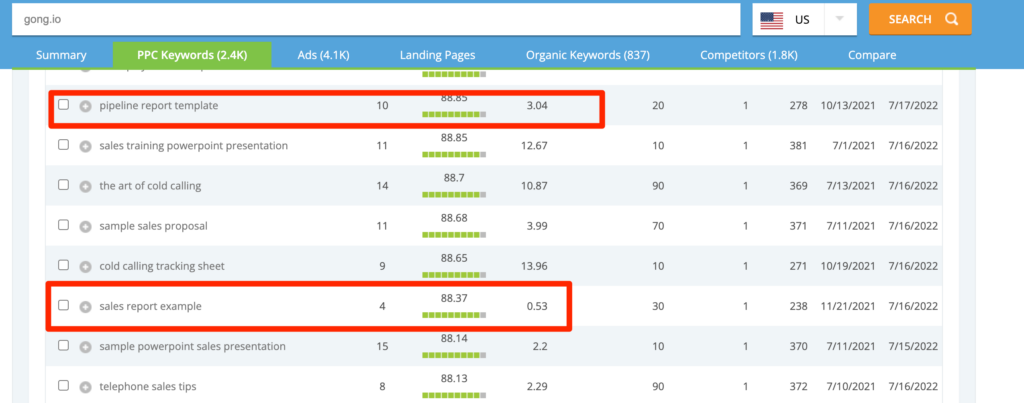The biggest determinant of whether a blog post will convert is not the call-to-action (CTA) that you place inside of a post, but rather the idea behind the blog post itself.
Devesh has an example about this that he frequently shares. When he was doing conversion optimization for a SaaS products blog, they had a post that was ranking for a very high volume keyword, but it barely converted. They ran test after test, putting CTAs in different places, trying different messages, popups, sliders, you name it. Nothing worked.
The topic simply did not attract customers.
This fact — that the topic is more important than traffic for conversions — dramatically changes the way you do content marketing for any business that’s selling a product or service.
In our post on pain-point SEO, we outlined how this concept dramatically changes your SEO-based content marketing strategy — specifically that you should not prioritize keywords by volume, but rather by pain points of your target customers.
But how do you identify those pain points? How do you know what your target customers are searching for? How do you get topic ideas beyond the first few, very obvious keywords?
In this post, I want to share some of the specific tactics we’ve used to identify pain points, learn customer questions, and more that give us a list of blog post ideas to go after. This is a tactical post that will teach our method of content creation from a conversion and customer pain point perspective, and empower you to come up with great content ideas for your own business or clients..
Let’s dive in.
Ways to Identify the Types of Content Topics That Will Convert
In our post on pain-point SEO, we argued that instead of taking a volume-first approach to keyword research and topic prioritization, you should focus on understanding pain points, and then back into your topics that way.
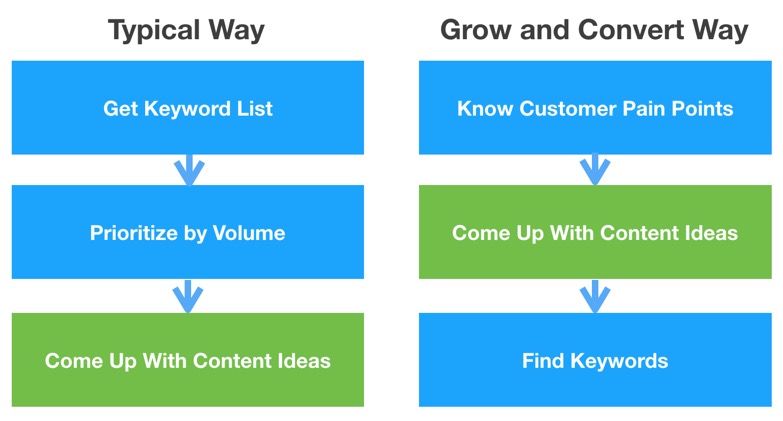
The easiest way to determine what challenges your customers have is to talk to them directly. But there are a lot of marketers and companies that don’t have the ability to do this for one reason or another.
You may not have the ability to talk to your customers if:
- You’re an agency like us — and sometimes don’t have direct access to your client’s customer base.
- You’re in a company that’s very protective about customer communication.
- You don’t feel comfortable talking to them.
- You don’t have many customers yet (in this case, that linked post should help you, along with some of the ideas below).
Here are some of the ways we combat these challenges to determine pain point topics that will drive conversions.
Hold a Meeting with Different Departments That Communicate with the Customer Directly
When we start a new engagement with a client, we don’t have the ability to talk to a ton of customers beforehand. So one way around this is that we hold a half-day customer research session with the client where we chat with members on the team that have direct interaction with the customers.
We’ll bring in people from the sales team, customer success/support team, the CEO, and people on the delivery side that talk to customers, etc.
We ask the sales team questions such as:
- Tell me about a recent conversation you had with a prospect, what was the challenge they were trying to solve?
- What was the last prospect/company that you had a really easy time closing? What was the problem that person was trying to solve for? Why do you think that person signed with you?
- What alternative products/services have prospects compared you to?
- Tell me about the competition… what do you think your competitive advantage is over the rest of the companies that you compete with?
- Are there specific industries or types of customers that you’ve noticed are a great fit for the product/service?
We ask the customer service team/support team questions such as:
- Can you give me some examples of some of your best customers (i.e. ideal customer profile or persona)? Who are they and why do you feel like they’re the best for you?
- Can you tell me the most common use cases that people use your products/service for?
- What do you feel like your competitive advantage is compared to all of the other alternatives out there?
- What are some of the top questions that you get asked on customer phone calls?
We ask the CEO or members of the founding team questions such as:
- Tell me about your background. What’s the story behind the company?
- What led to the idea behind the company?
We ask the delivery side or product side of the business questions such as:
- What feature set and/or part of the service do customers use most?
- What are the most common use cases of the product/service?
Then we take notes about all of the answers to these questions, brainstorm, and look for commonalities and disconnects in the responses. When we have disconnects from different departments, we push them to see why they think differently than others in the company.
We translate the most common use cases, questions, and problems that customers are trying to solve for into new content ideas.
For example, if we were to run through this exercise on our own business, some of the common problems our clients are trying to solve for are:
- Prospects feel like their blog post ideas don’t attract the right customer (the idea behind this post).
- Prospects feel like they aren’t driving enough traffic or don’t have any strategy to drive traffic.
- Prospects feel like their blog doesn’t convert anyone to signups/leads.
Much of the content on our site aims to educate people around how to solve these problems. We either answer specific questions that we get and/or search for a keyword that ties into these pain points.
If we were to use our pain point SEO strategy here, we might want to target a term like “blog post ideas,” which our keyword research tool shows has an estimated monthly search volume of 4,400 searches per month.
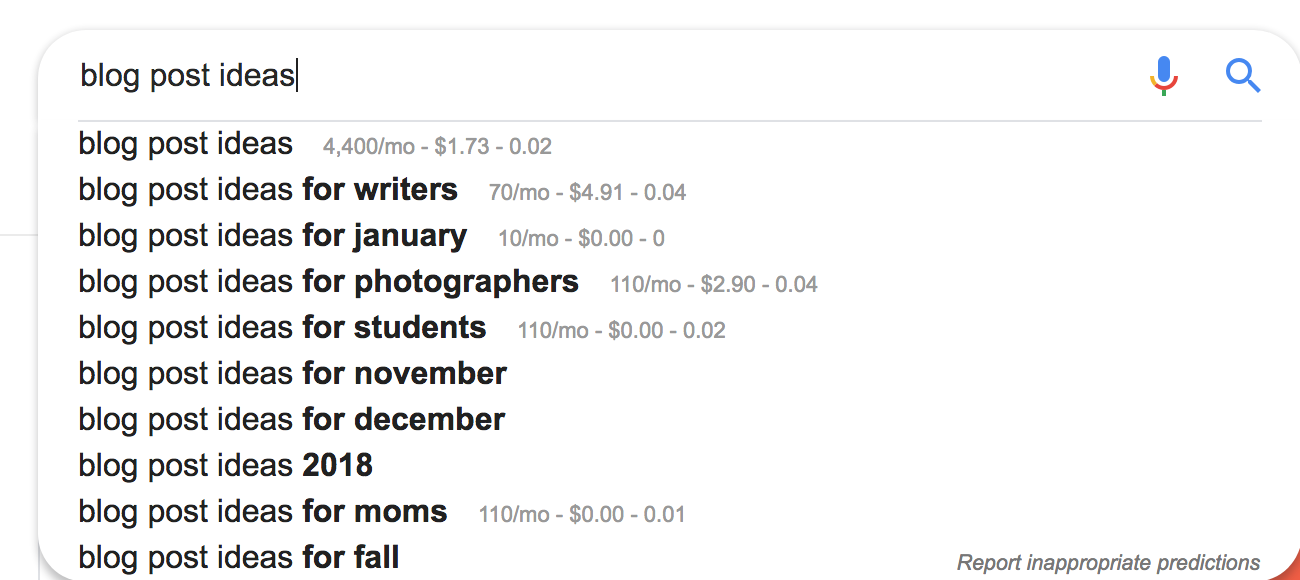
However, the reason I didn’t target that term for this post is because looking at the top ranking posts that show up under that keyword ends up being just lists of blog post ideas.
When people Google search “blog post ideas,” their intent behind that term is just to generate ideas for blog posts, not to learn the strategy behind how to do this.
So I felt that it was better to target the term “content ideation” because if you’re searching for that term, you’re likely more interested in learning the strategy behind how to do this.
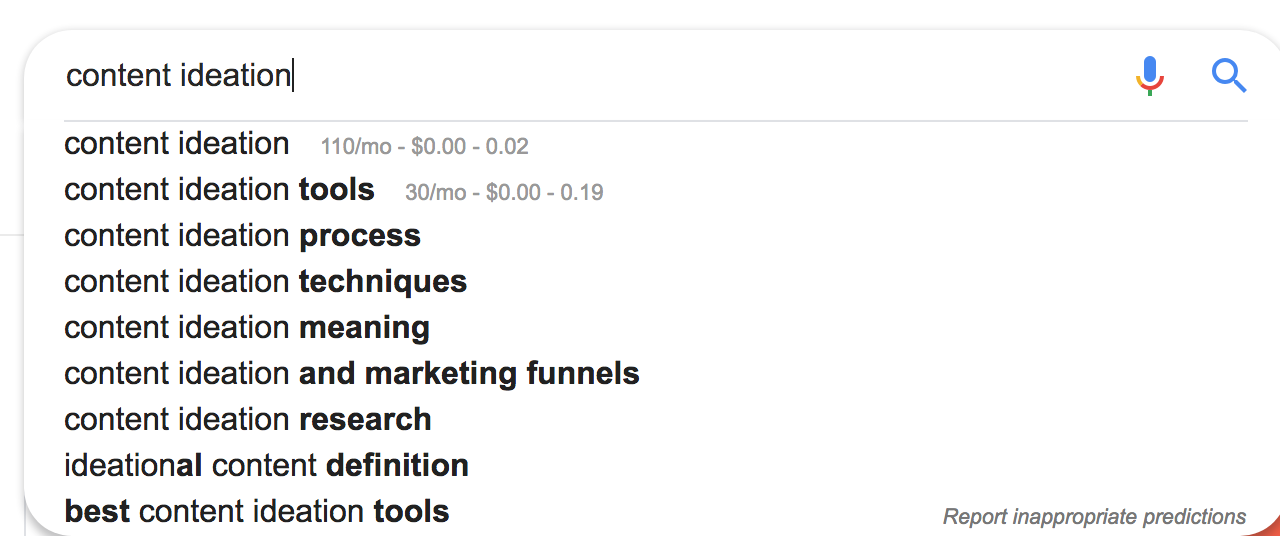
Even though “content ideation” has way less search volume, I think it’s a better term for us to target because people searching “blog post ideas” are looking for quick solutions. This indicates that they are at the starting point, likely beginners, likely starting a personal blog, and not blogging for a business (and therefore not serious about investing in content marketing either via our agency or our course).
See the difference? We will happily exchange search volume for search intent — which we determine by reviewing the search engine results page or SERP for that specific keyword — because our business model is not based on pageviews, it’s based on providing a few specific products (a service, and a course) to a target audience.
Create an Email Autoresponder That Provides a Feedback Loop That Lets You Know Your Customer’s Biggest Challenges
Another way we get a constant flow of blog post ideas is that we ask anyone who subscribes to our email list what their #1 marketing challenge is at this moment.
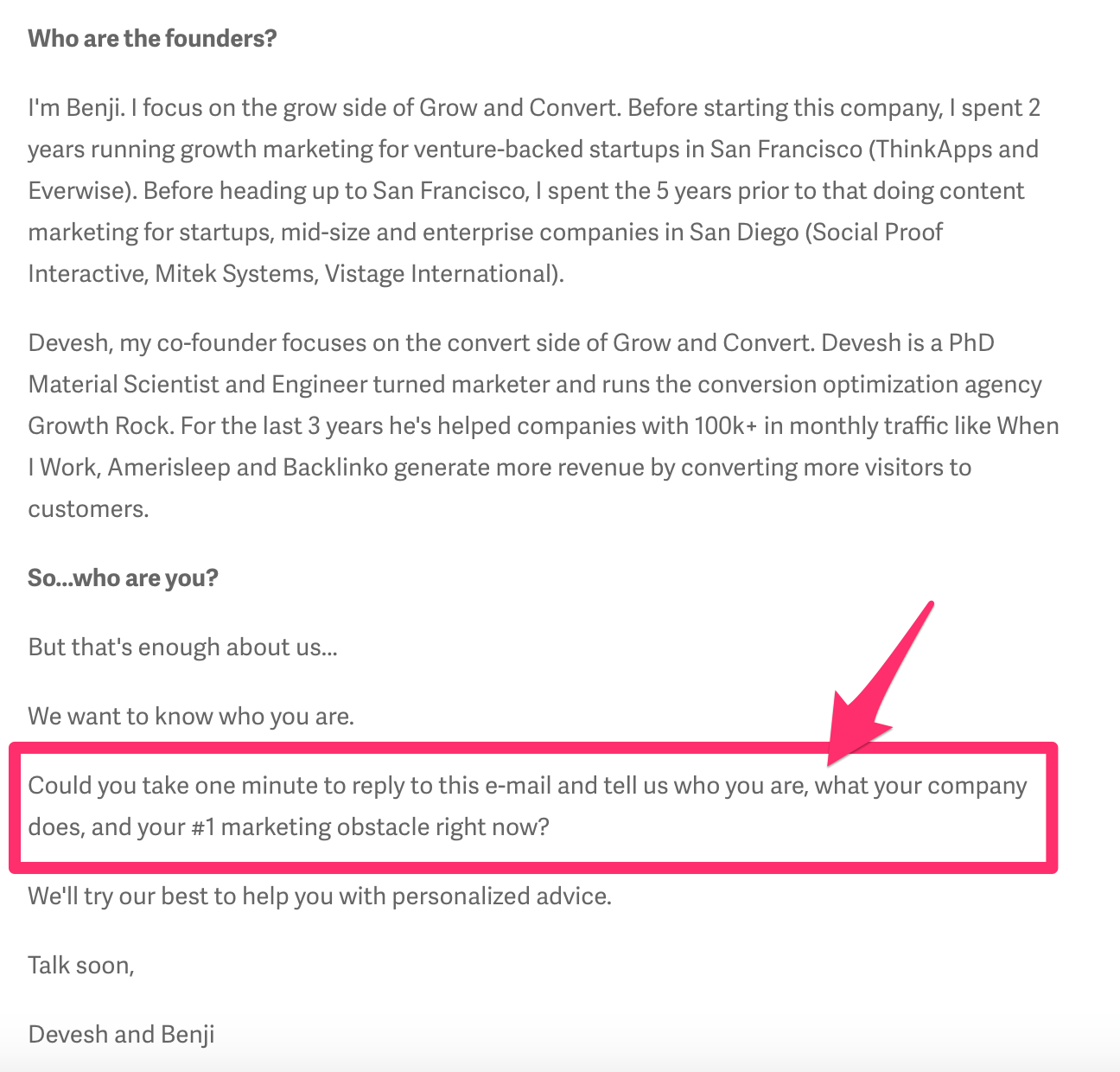
Since starting our site over 3 years ago, we’ve had somewhere between 500-1,000+ people respond telling us the challenges they face in their role.
Think about that. That’s an incredible amount of feedback from barely any effort.
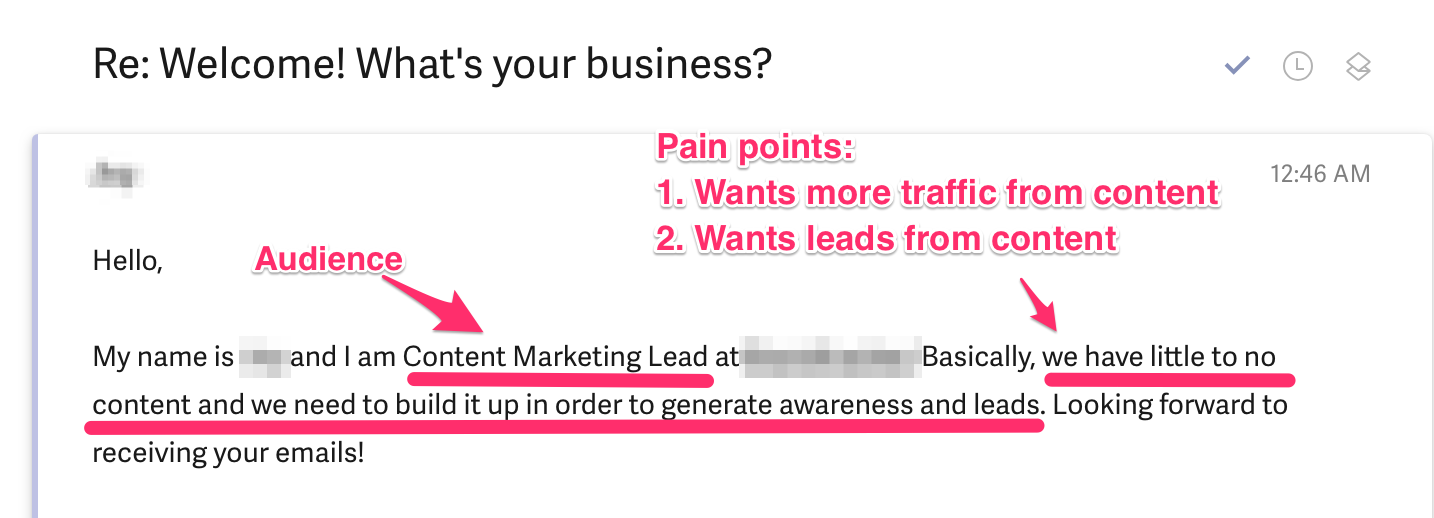
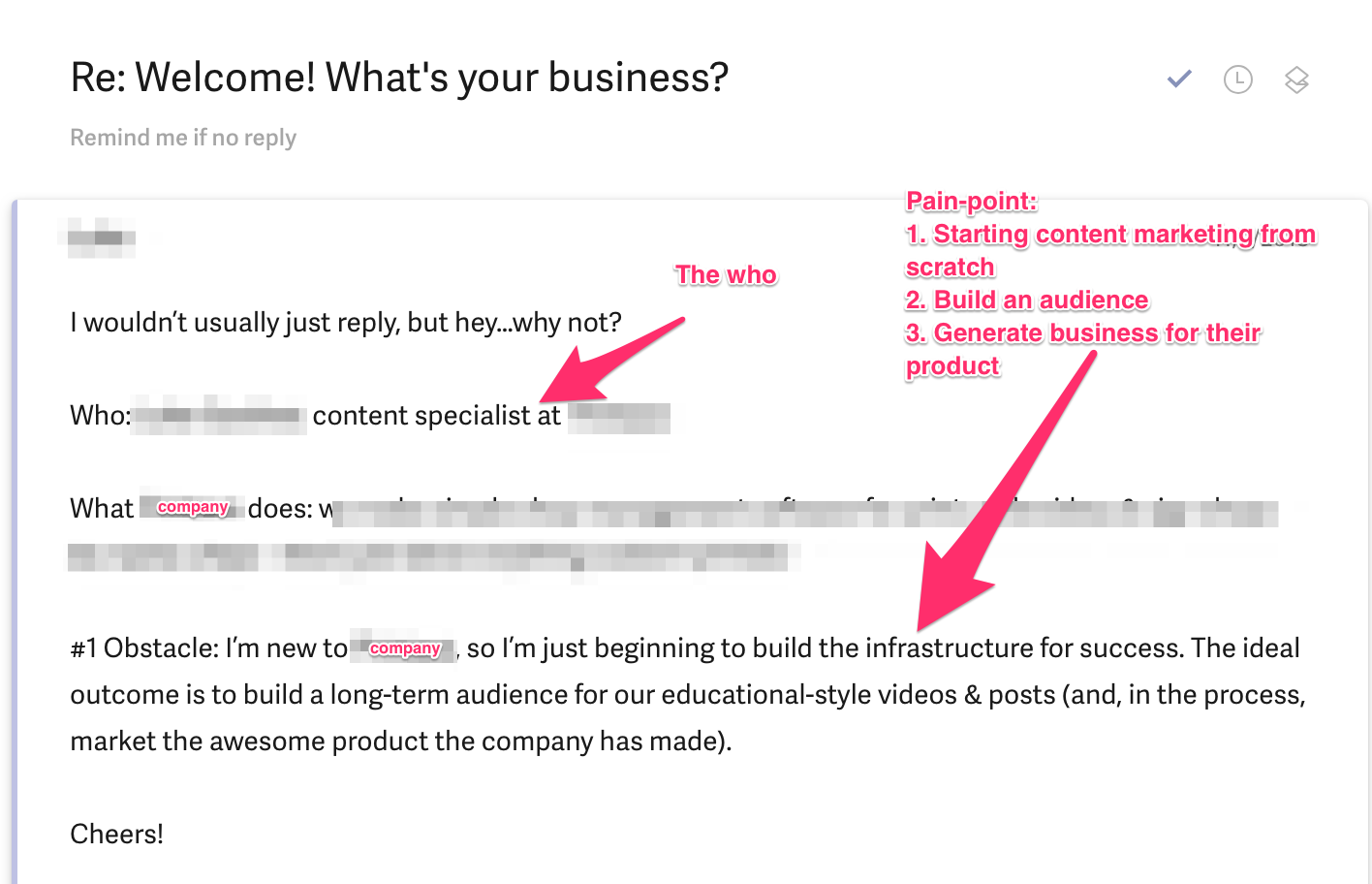
Just from these two emails, we’ve identified 5+ high-quality content topics that we can write on:
- How to generate more traffic from content marketing
- How to get more leads from content
- How to build a content marketing operation from scratch
- How to build an audience from scratch
- How to generate awareness for your product
The key in getting this feedback loop to work is that we actually take the time to respond to each and every person that emails us. People are often surprised when they get an email back because most blogs and companies don’t take the time to interact with their readers.
Join Social Media Communities Where Your Customers Would Hang out and Pay Attention to the Questions and Challenges They Have
Beyond using communities to drive traffic, they are also a great way to source relevant content ideas. I’m a member of around 20 different Facebook groups and constantly monitor the feeds to see if there’s any questions or challenges that stick out to me that I can write about.
I took a look through a couple of Facebook groups this morning and found these two questions that we could turn into full blog posts.

The potential idea for content that sticks out from this one: Should you blog on Medium or use WordPress or another CMS?
This is a common question companies have when they first start blogging. And a quick Google search shows that many other people have this same question.
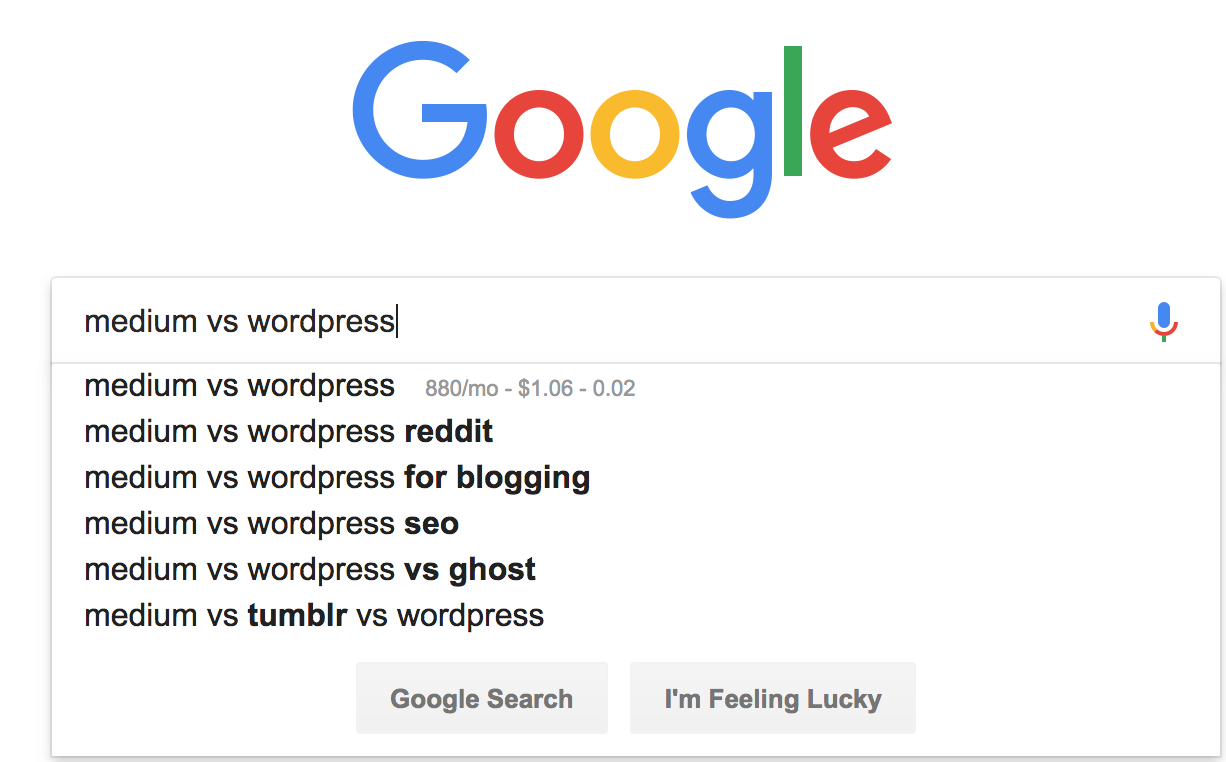
In another group, I came across this question: “Curious to know in what phase of the business lifecycle you started your blog?” The content ideation process that stems from this one is:
- “When should a startup start blogging?”
- Content marketing ROI (which we’ve written a post about already)
Look at how much engagement this one question has in this group — it’s a good indicator that it’s a hot topic and potentially worth creating a piece of content on.
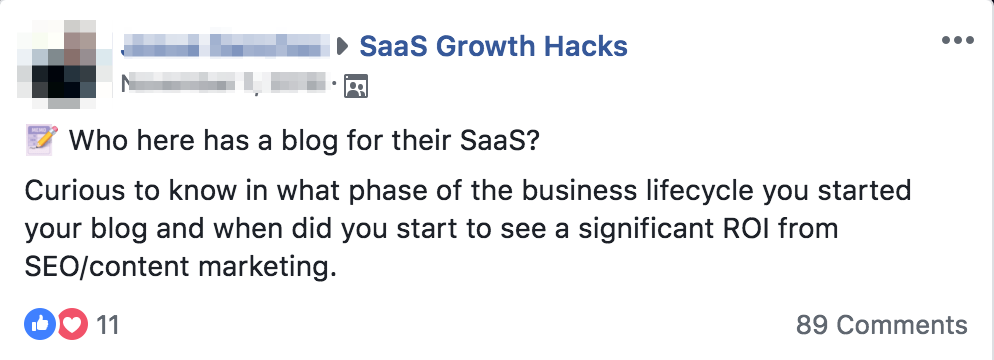
Some other social media communities that are great for content ideation research are Reddit, Discord and Quora forums. You can run a keyword search, sort by top threads, and look for questions and/or challenges that stick out to you.
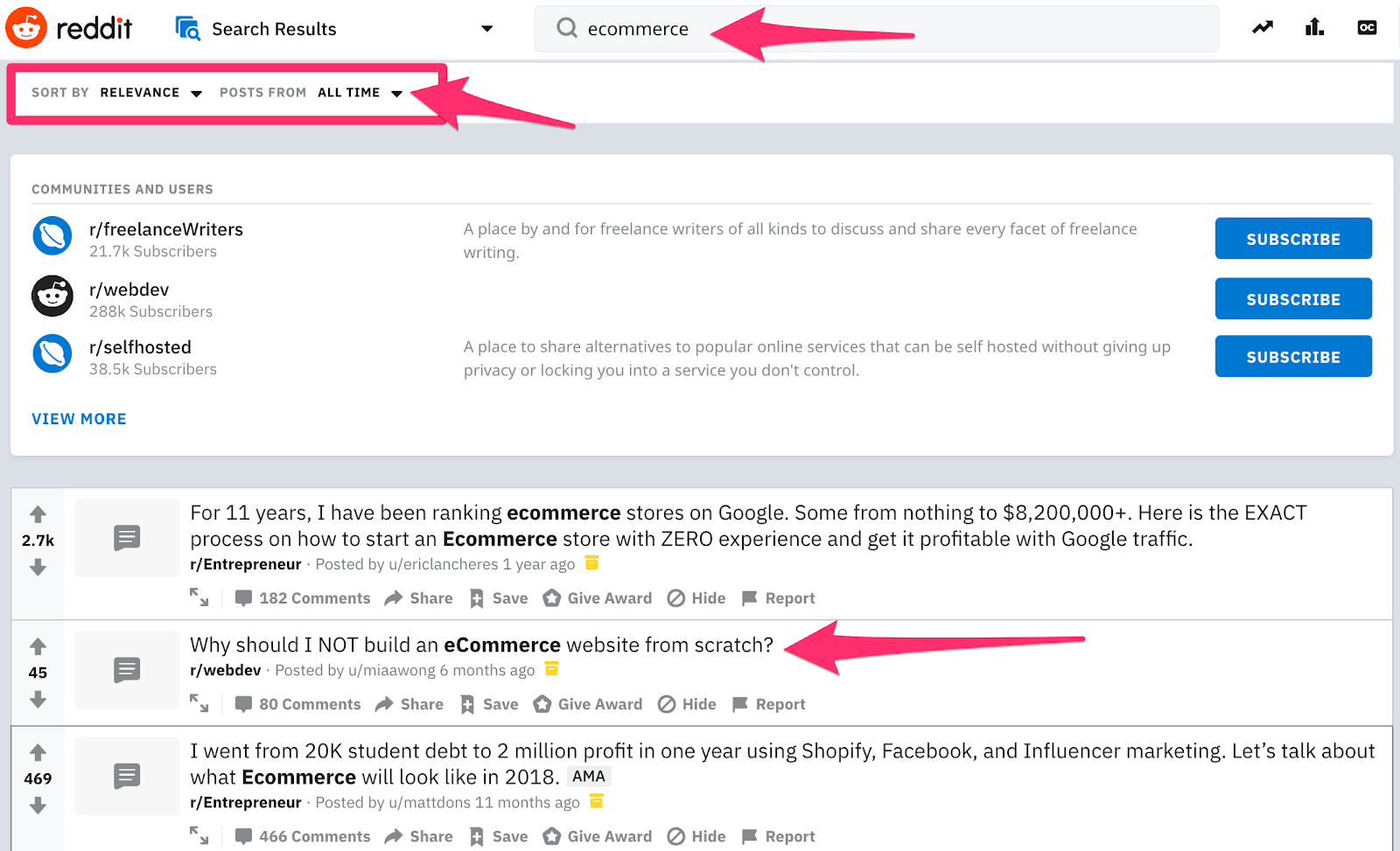
In this case, I had a call with someone in the e-commerce space last week that said around 50% of e-commerce sites are custom built — so if you’re using content to attract e-commerce companies for your product or service, this could be a great controversial topic to write about.
For example, reasons why building a custom e-commerce site isn’t a good idea.
Once again, continue to apply the filter of: who is asking this question? In this case it seems to be people on Reddit starting e-commerce companies.
If you’re targeting large $50 million+ e-commerce brands, for example, you may discover they are long past asking this question and thus this may not be a good topic for you.
Look Inside of Your Google Adwords Account and See What Keywords Are Converting — Create Blog Posts Around Those Keywords
If you’re already advertising on Google Adwords, then this is one of my favorite strategies because you can leverage data from something that’s already showing results and shortcut the keyword research process.
For other content consultants and agency owners, you should for sure use this to come up with high converting content topics.
If you go into your Google Analytics account, and you have conversion goals set up, you can open up the model comparison tool, and click into the paid search category to discover keywords that are already bringing in conversions for your product or service.
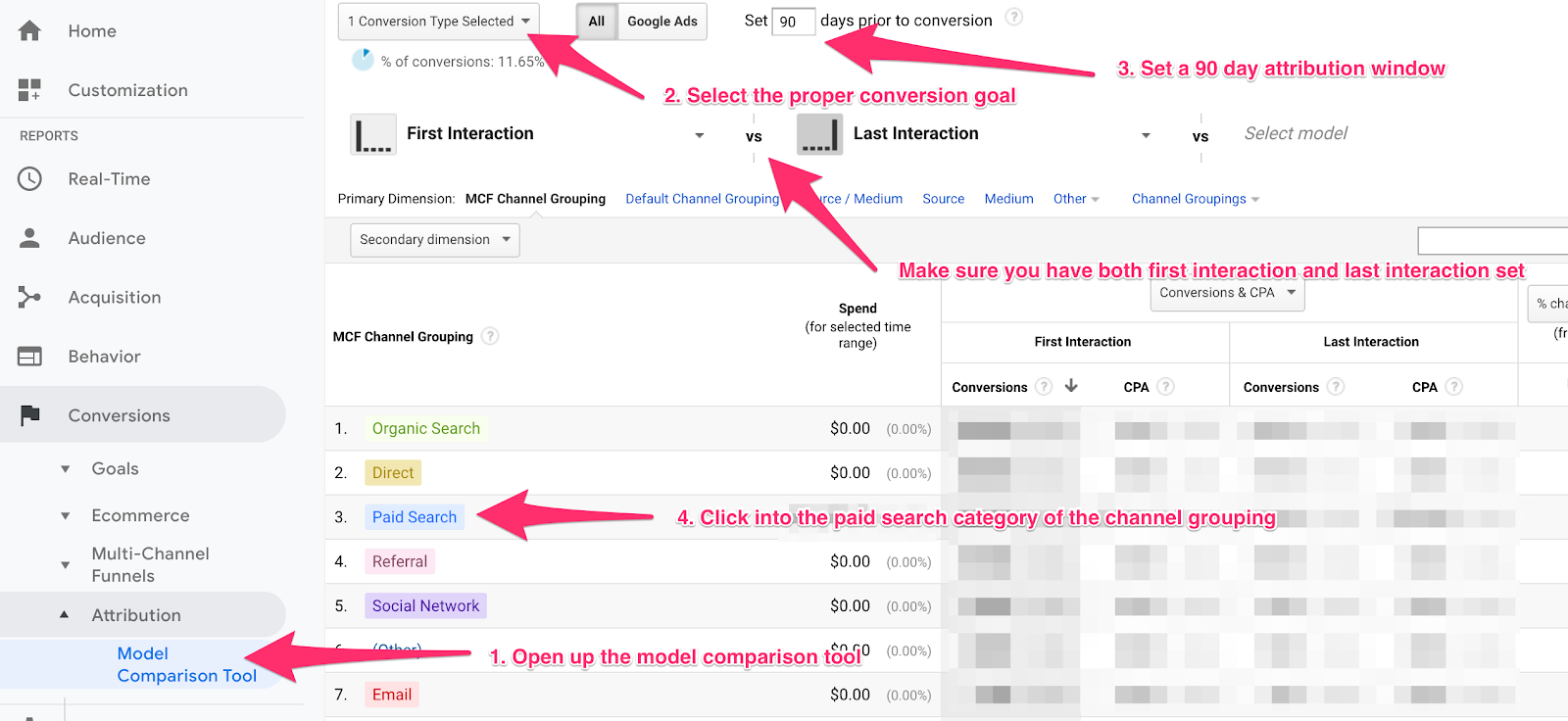
Once you’ve clicked into the paid search category, use the secondary dimension tab and search for the keyword button to get a list of relevant keywords that are bringing in conversions.

You’ll be taken to a page that shows the list of keywords and the amount of conversions that have been brought in for each search term. It looks something like this…
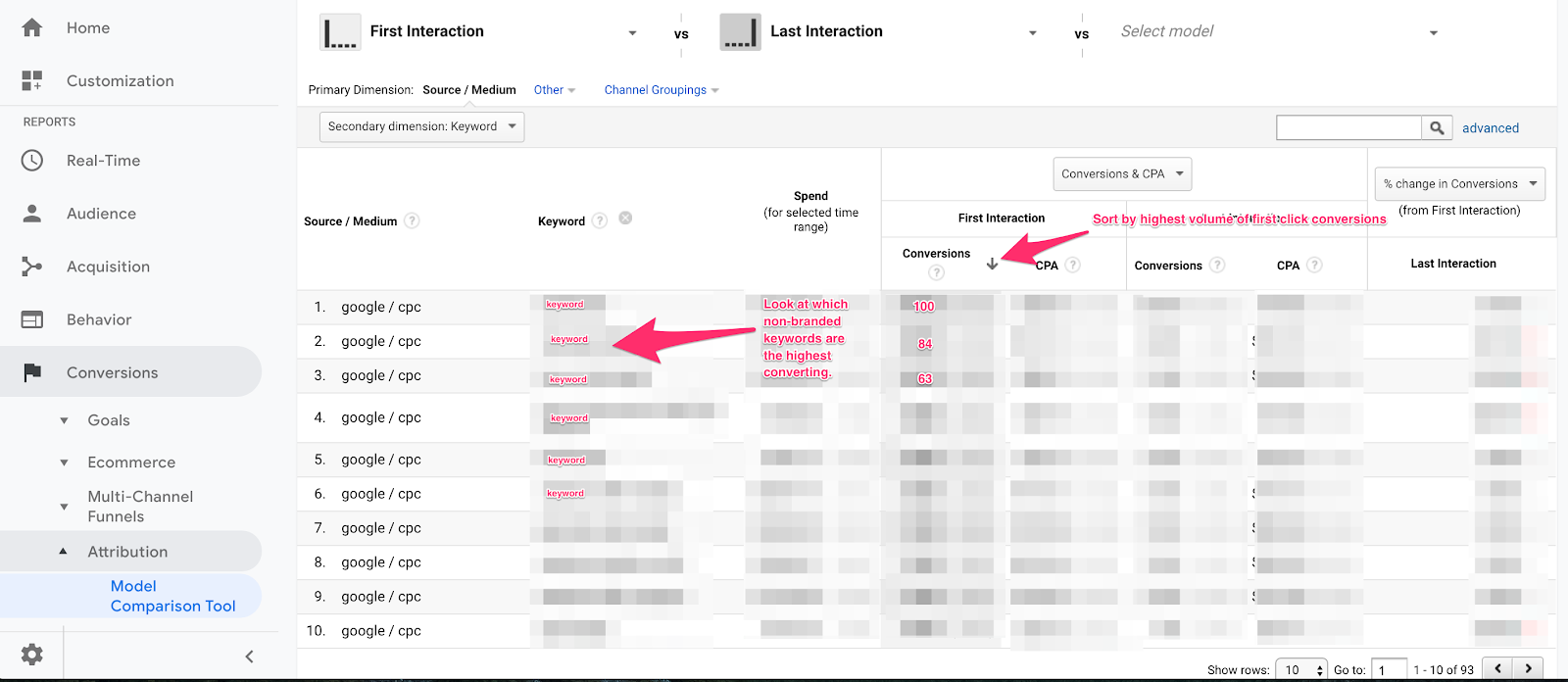
Then take those keywords and either run them through a tool like Ahrefs, Moz, SEMrush, or Google Keyword Planner to see the difficulty level of going after that term, and then prioritize your posts by the ideas that are easiest to rank for and that have the highest conversion volume.
Over time, the goal should be to have organic blog posts that rank for the terms you’re paying for so that you can slowly be less reliant on ad spend and obtain leads from organic search results.
This technique is so powerful because you already know these keywords convert. Once your post starts ranking, you simply start getting some of those leads for free.
Use competitor research tools
One of my favorite paid tools to come up with new content ideas is iSpionage. iSpionage allows you to put in the domain name of one of your competitors into the tool and see what paid keywords they’re bidding on and what organic keywords they’re bidding on.
I use this to back into what keywords might be converting for my competitors on the paid side, and then would use this information to create a piece of content that would go after that same keyword organically (if it made sense for the product or service I’m selling).
As an example, I’ve entered in the URL for the software Gong which helps sales teams track their pipeline. If I had a competitive product to Gong (something in the sales reporting or pipeline tracking/management space), I’d go through the list of keywords they’re bidding on and try to find ones that seem bottom of the funnel — ie. a keywords that have a tie-in to the product I’m selling.
Here would be two examples: pipeline report template and sales report example being that those are likely features (pipeline reporting and sales reporting) that I would have in my competitive tool. Then you could create blog posts on those topics and show how it’s easier to create a pipeline or sales report with the tool you’re trying to sell.
FAQ: Get a List of Commonly Asked Questions That Your Sales Team Receives on Phone Calls
When I was at ThinkApps, on top of doing marketing, I also answered every inbound phone call so that I could learn more about the prospects that I was generating.
The benefit of doing that was getting to hear the challenges and pain points directly from the customers themselves and then coming up with blog post ideas that we should write about.
For example, one of the best converting blog posts that we produced came from a prospect that said, “I’m trying to build an app, but I’m not sure if I should develop it on iOS or Android.”
I wrote down that question, then looked it up in Google Suggested search and saw that there were a lot of people searching for iOS vs. android development.
We ended up creating a post on that topic that generated tons of social shares and was one of our highest converting blog posts.
Most marketers won’t have the ability to hop on the phone and directly talk to customers, but one way around that is to have a brainstorming session with your sales team — have them write down a list of questions that they tend to receive on sales calls.
It’s also important for the sales team to distinguish if the questions are from a first call with a prospect, a second call with a prospect, or if the prospect is further down the funnel. This will help you map the question/ pain point to where they are in the sales funnel.
I’ve found that writing answers to commonly asked questions is a great way to build SEO traffic and create conversion oriented content.
The Right Topic > High Traffic
To drive the point home that topic is superior to volume, I want to share a screenshot with the stats from our post on pain-point SEO that shows the post is #10 for traffic, #1 for conversions, and converts 4% higher than any other post.
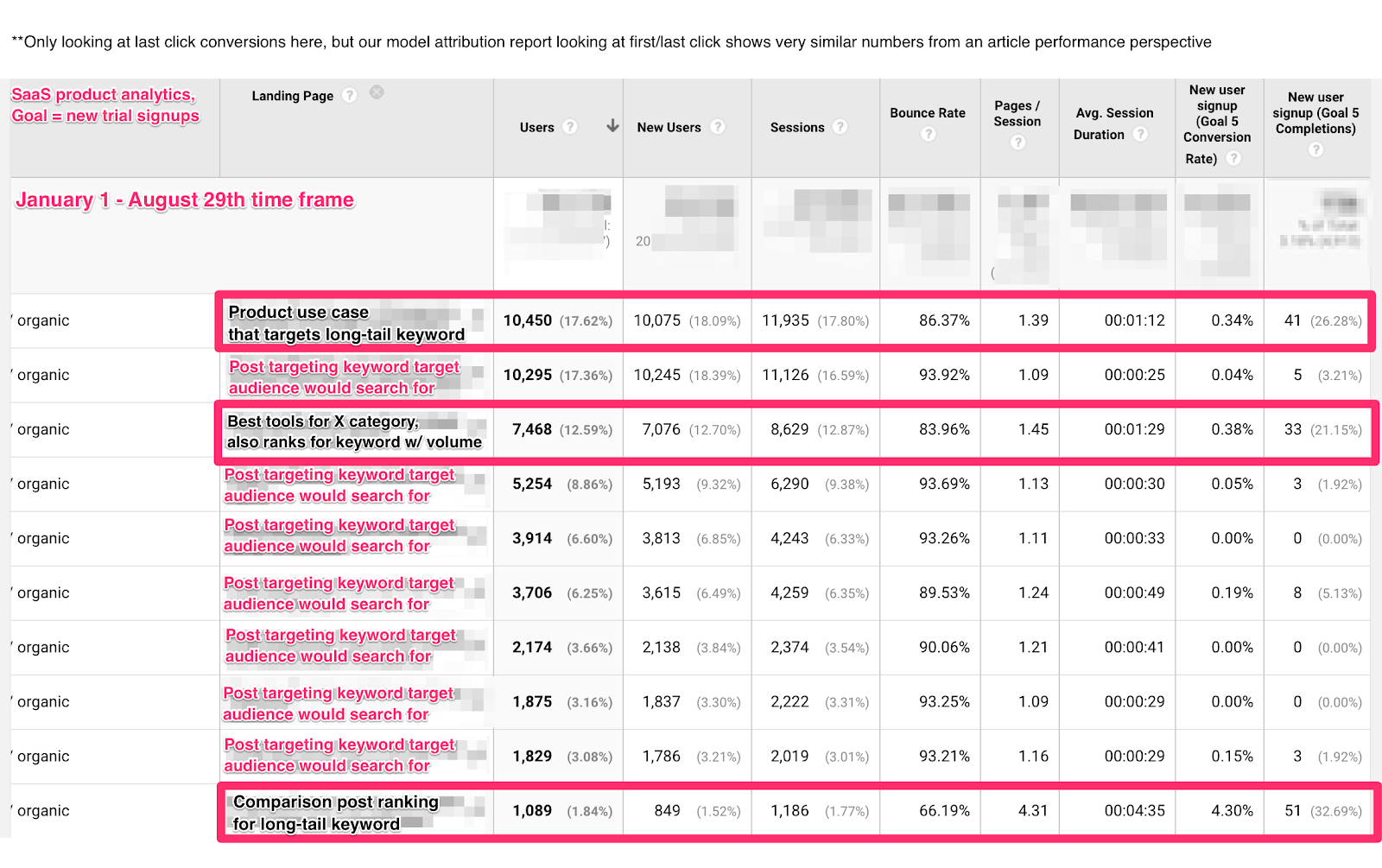
That’s not by accident. Instead of the typical traffic-chasing, top of funnel white papers, infographics, and ultimate guides, you should use our pain-point SEO strategy along with the tactics above to identify topics that will yield conversions for your product or service.
If you found this post valuable, check out our content marketing course and community. We include lots of detail and examples not found on this blog. We also answer questions and give feedback on the specific scenarios, keyword strategies, and even blog posts of community members.



